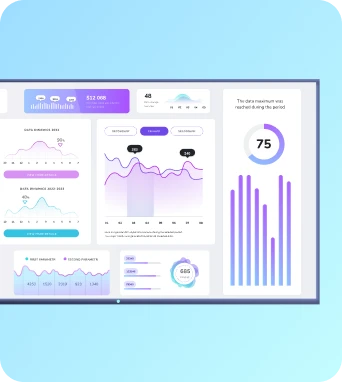Ambient light sensors
Ambient light sensors are hardware devices or integrated system sensors that detect environmental illumination and report lux or correlated colour temperature values. In digital signage contexts they enable automatic brightness and colour adjustments, reduce power consumption, and maintain consistent visual quality across diverse locations and viewing conditions.
What is Ambient light sensors?
Sensor characteristics and technical integration for signage players
Ambient light sensors range from simple photodiode-based detectors to more sophisticated silicon photomultipliers and multi-channel colour-sensing modules that provide lux plus correlated colour temperature (CCT) readings. Key characteristics that matter in digital signage deployments include spectral response, dynamic range, linearity, response time and directional sensitivity. A typical photodiode with an analog output will be interfaced to a signage player via an ADC (analog-to-digital converter) or a dedicated sensor bridge; the player firmware or an edge gateway reads lux values at a configured interval, applies calibration offsets and maps measured lux to a display brightness percentage. For example, a wall-mounted retail display might use a linear mapping where readings below 50 lux set the backlight to 30% and readings above 1000 lux drive the panel towards 80–100%, while indoor office dashboards use a gentler curve to avoid glare. Colour-temperature capable sensors provide additional inputs to adjust white point or apply display colour management transforms so that content appearance remains consistent under warm incandescent or cool fluorescent lighting. Integration protocols vary: many commercial Android and Linux signage players expose sensor inputs through USB HID profiles, I2C bridges, serial-over-USB devices, or via an MQTT endpoint when the sensor is connected to an IoT gateway. Practical examples include a Raspberry Pi player that reads a TSL2561 I2C sensor and publishes lux over MQTT, and a commercial SoC player that exposes an ambient-lux API over HTTP for device management systems. In a Fugo.ai workflow the sensor telemetry can be ingested by the device agent or by an intermediate gateway, and then mapped to display profiles or automation rules in the cloud. When designing these integrations it is important to consider sampling frequency (too frequent causes jitter and potential flicker, too infrequent misses rapid changes), ADC resolution (8-bit ADC yields coarse steps at low lux), and sensor placement so that the reading represents viewer-facing illumination rather than a local light source or reflection.
Deployment, calibration and operational optimisation for ambient light sensing
Successful deployment of ambient light sensors in a signage estate begins with site surveys and careful placement. Sensors should be mounted to sense the illumination level that affects the viewer’s perception of the screen rather than the illumination of the ceiling or a nearby window. Common mounting locations include the top bezel area of a display, a short distance off the display plane using a small bracket, or integrated into the player enclosure where the optical path is unobstructed. Physical obstructions, glossy bezels, and reflective surfaces introduce misleading readings, so shielding and angling the sensor to avoid specular reflection is important. Calibration routines should be applied during installation: capture reference readings under known lighting conditions and record offset values for each sensor or player to compensate for sensor-to-sensor variance and manufacturing tolerances. Operational considerations include choosing an appropriate hysteresis and smoothing algorithm to prevent frequent brightness oscillations when illumination fluctuates. A common approach is to sample lux every few seconds, apply an exponential moving average to create a smoothed value, and use threshold bands to change brightness only when the smoothed value crosses those bands persistently over several samples. Networked estates should centralise telemetry for monitoring and alarm generation; Fugo.ai customers can ingest device metadata and sensor telemetry to an admin dashboard to track sensor health, detect drift or failure, and roll out calibration updates. Beware of edge cases such as seasonal sun angles or temporary obstructions that can skew readings; implement fallback profiles so displays remain readable if sensor data is unavailable. Finally, document the mapping from lux and CCT to display parameters so that content teams understand how environmental changes affect colour and contrast, preserving brand fidelity across locations while achieving energy savings and improved legibility.
Final Thoughts on Ambient light sensors
Ambient light sensors are a pragmatic, low-friction way to make digital signage and TV dashboards smarter and more efficient. By converting environmental illumination into actionable telemetry, sensors enable automated brightness and colour adjustments that improve legibility, reduce energy consumption and maintain brand consistency across heterogeneous display fleets. For IT administrators and signage managers, the key benefits are fewer manual adjustments, reduced maintenance overhead and better measured audience experience, while integrations with platforms like Fugo.ai allow sensor data to be incorporated into rule engines, monitoring dashboards and device management workflows. When specified correctly and deployed with sensible calibration, smoothing and fallback logic, ambient light sensing becomes a reliable component of a modern signage architecture that supports both operational optimisation and more engaging visual communication. Learn more about Ambient light sensors – schedule a demo at https://calendly.com/fugo/fugo-digital-signage-software-demo or visit https://www.fugo.ai/.
Keep the learning going...
Amazon Fire TV Stick
An Amazon Fire TV Stick is a compact consumer streaming player that can run signage apps and act as a low-cost digital signage player. In signage contexts it connects to content platforms like Fugo.ai, rendering playlists, dashboards and interactive content over HDMI while relying on Wi-Fi, Fire OS and app-based management for remote updates and control.
Ambilight effects
Ambilight effects are dynamic ambient lighting techniques that extend on-screen visuals into the surrounding environment by sampling or analysing content and driving LED or display lighting. In digital signage they boost perceived contrast and brand presence, reduce eye strain, and create immersive dashboards and workplace displays that react to scheduled or live content.



